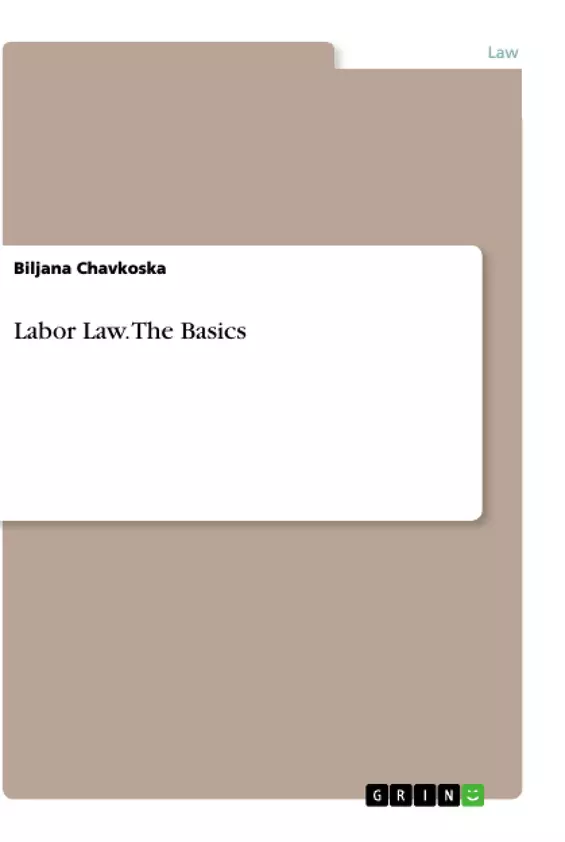The basic idea for creating the European Union is the Internal Market where free movement of people, capital, services and goods is established. The creation of the Internal Market is the central raison d’etre of the EU existence. The freedom of movement of people is one of the four freedoms of the Internal Market. The right to move is the basic right of the European citizens. The realization of this freedom was harder than practicing the free movement of capital, services and goods. Therefore, the European Union is still taking subsequent actions for realization of the freedom of movement of people. At the beginning, the freedom of movement of people was available just for the working population, but latter on the freedom of movement included all the categories of citizens, students, retired people and people who are not economically active.
Throughout the years European Union makes efforts to change the approach towards the third country nationals, especially the working population as one of the conditions for fulfillment of the Lisbon Strategy goals.
The European Union adopted important primary, secondary law and case law of the European Court of Justice such as the Association Agreements regulating the freedom of movement of third country workers. These Association Agreements with Third Countries provide articles for free movement of third country workers in the European Union and vice versa. For a long time, the Association Agreements are the basic law regulating the freedom of movement of third country workers. The European Court of Justice played important role in interpreting the articles for freedom of movement of workers and giving direct effect in the national laws of the Member States.
In the last two years European Union has adopted secondary law for improving the status of third country workers especially for highly qualified workers. The entrance of highly qualified workers in the Member States is important for realization of the economic growth and development, such as decreasing the unemployment rate.
Inhaltsverzeichnis (Table of Contents)
- CHAPTER ONE
- FREEDOM OF MOVEMENT OF WORKERS IN EUROPEAN UNION
- INTRODUCTION
- FREEDOM OF MOVEMENT OF WORKERS
- ASSOCIATION AGREEMENTS
- TRANSITIONAL AGREEMENTS
- POSTING OF WORKERS REGULATION
- CHAPTER TWO
- EQUAL PAY RULES IN EU LAW
- CHAPTER THREE
- INTERNATIONAL LABOR ORGANIZATION
- BACKGROUND
- STRUCTURE
- ACTIVITIES
- CHAPTER FOUR
- NATIONAL LABOR LAW
- EMPLOYMENT CONTRACT
- SPECIAL FORMS OF EMPLOYMENT CONTRACTS
- OBLIGATION OF THE WORKER
- OBLIGATION OF THE EMPLOYER
- INTERNSHIP, STAGE AND WORK ON PROBATION
- ORGANIZATION OF WORKING TIME
- MATERNITY LEAVE
- WORKING AGE
- WAGES
- EMPLOYMENT OF FOREIGNERS
- HARRESMENT ON THE WORKING PLACE
- SOLVING OF LABOR DISPUTES
- TRADE UNIONS
Zielsetzung und Themenschwerpunkte (Objectives and Key Themes)
This book provides a comprehensive overview of labor law in the European Union, focusing on the legal framework and key regulations governing the workplace. It aims to clarify complex legal concepts, provide practical guidance for both employers and employees, and shed light on the challenges and opportunities presented by the EU's evolving labor landscape.
- Freedom of Movement of Workers within the EU
- Equal Pay and Non-Discrimination Laws
- International Labor Organization and its Role
- National Labor Law Regulations and Practices
- Challenges and Opportunities in the European Labor Market
Zusammenfassung der Kapitel (Chapter Summaries)
- Chapter One focuses on the freedom of movement of workers in the European Union, analyzing the legal framework surrounding this right and examining key provisions such as the right of family reunification and the posting of workers regulation.
- Chapter Two explores the equal pay rules within EU law, examining issues such as indirect discrimination based on gender, objective justification, and positive actions in the legislation.
- Chapter Three delves into the International Labor Organization, providing an overview of its background, structure, and activities. This chapter highlights the global context and importance of international labor standards.
- Chapter Four investigates national labor law, offering a comprehensive overview of employment contracts, different forms of employment, obligations of both employers and employees, and crucial topics like internship regulations, working time organization, and maternity leave. It also addresses important issues such as harassment on the workplace and the resolution of labor disputes.
Schlüsselwörter (Keywords)
The book explores key concepts and terms related to EU labor law, including: freedom of movement of workers, equal pay, non-discrimination, international labor standards, employment contracts, posting of workers, working time regulations, maternity leave, internship regulations, harassment on the workplace, trade unions, and labor dispute resolution. The book offers insights into the current challenges and opportunities facing European workers and employers in a globalized and increasingly dynamic labor market.
- Citation du texte
- Biljana Chavkoska (Auteur), 2020, Labor Law. The Basics, Munich, GRIN Verlag, https://www.grin.com/document/703223



